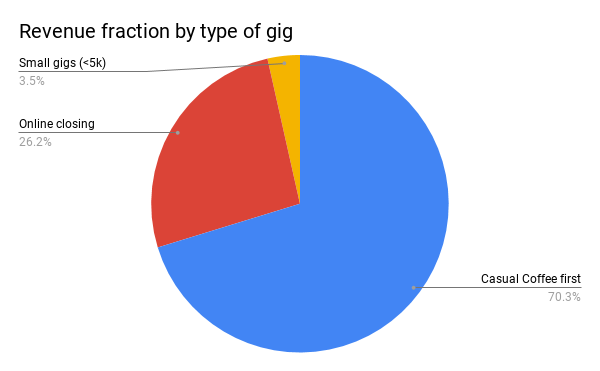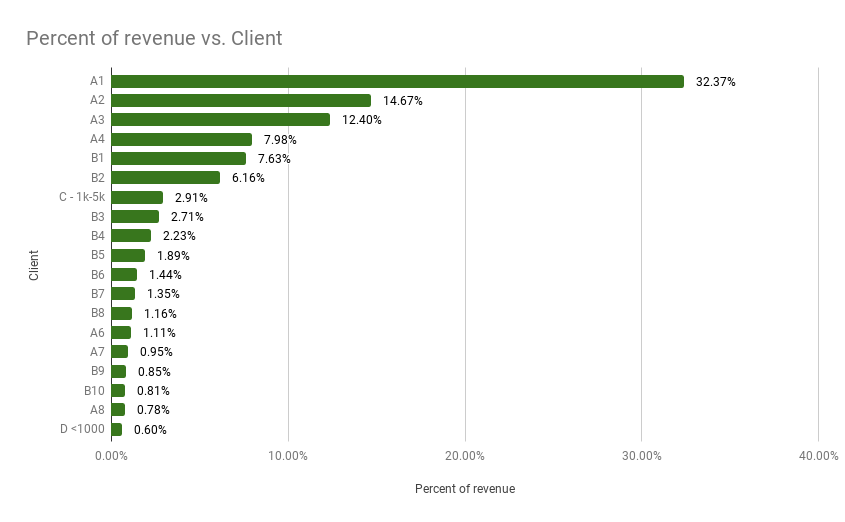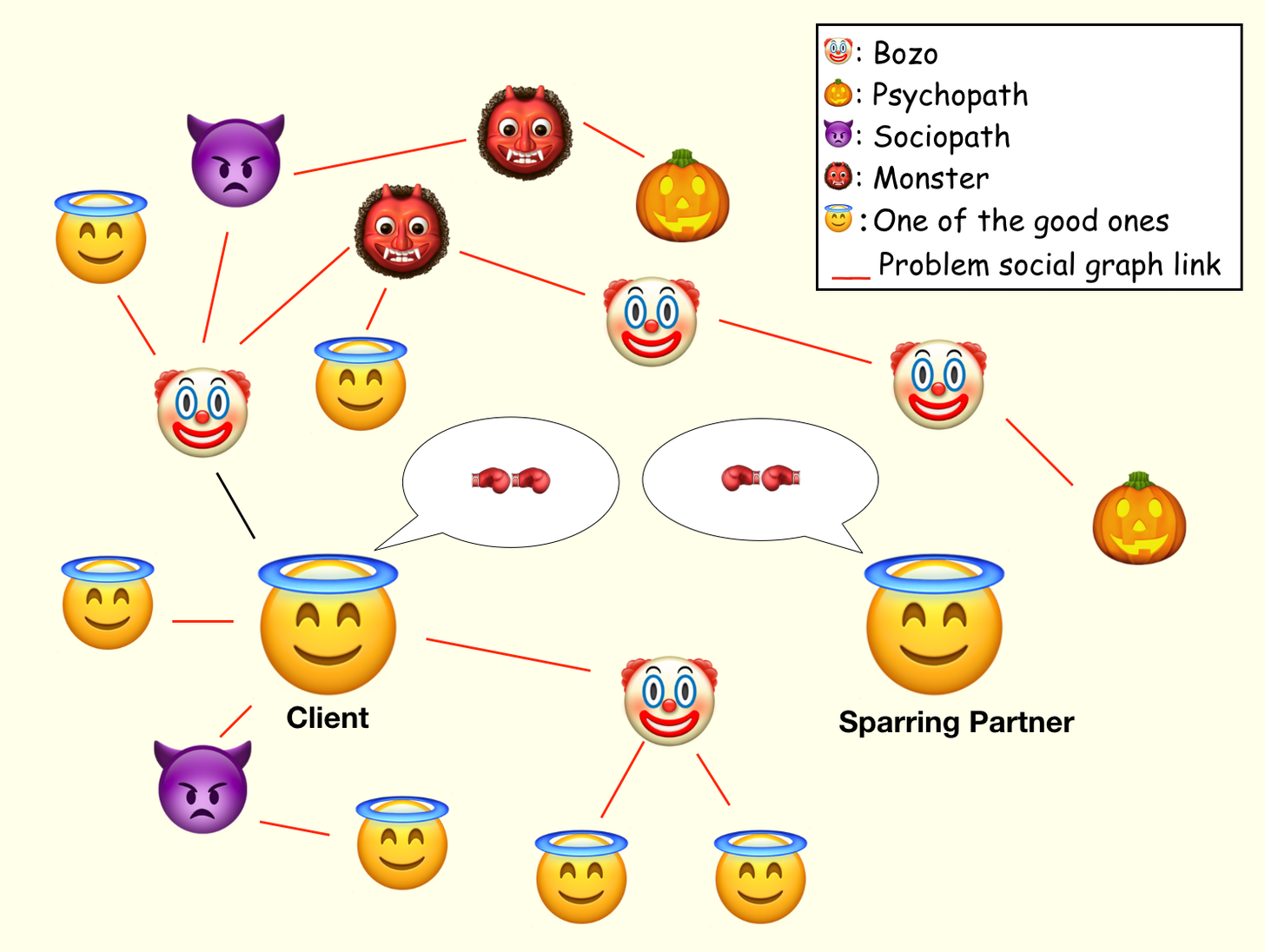For the tenth time in ten years, yet again I find myself about to make what is perhaps the most strategic decision for an indie consultant: where should I live? And this time, I think I have to make the decision very differently. This is because the right answer used to depend on one big variable that swamped everything else: the potential for casual coffee meetings. This potential of course, has been destroyed by the pandemic.
The decision is basically this: should you pay a premium to live in an important business hub (typically a major metro), with a major airport? Or should you save on costs by living somewhere cheaper and more remote?
What exactly is the value of being able to take a lot of casual, serendipitous, impromptu meetings with potential clients? And how does this equation change due to the pandemic-related travel freeze, both in the short and long-term?
I won’t bury the lede: I ran the numbers for my own practice over the last 9 years, and 70.3% of my consulting revenue can be attributed to gigs that started out as casual coffee meetings, while 26.2% closed online. Here’s the pie chart (I consolidated 17 small clients with billings under 5k, and amounting to 3.5%, into one small pie slice):
So the headline is crystal clear: at least my kind of consulting practice is hugely dependent on gigs that start out as casual coffee meetings. Here is a more detailed breakdown. Look at the clients tagged A and B in particular.
The clients tagged A began with in-person, casual-coffee-meeting encounters, while the B clients are ones I closed after purely online interactions (including phone/video calls) and negotiations. Some of these, I have never met in person.
The Cs are 8 clients with total billings of 1k-5k each, and Ds are 9 clients with total billings under 1k (typically one-shot spot consults). Almost all of the Cs and Ds are online-only closings, but I haven’t bothered detail-coding them as such, since they’re pretty much a rounding error on the headline: 70% of revenue starts with casual coffees, and four of the top five clients started out that way.
Edge Ambiguity
As you can see, 4 of the top 5 clients started out as casual coffees first. In fact, the picture is even more dramatic than it looks because B1 and B2 are actually edge cases, and if I include them in the A list, the proportion changes to 83% casual-coffee first, and 13% online closings, and 6/6 of top 6 gigs by revenue (81% of the total) being casual-coffee first.
Both these edge cases have interesting anecdotes attached that shed light on how deals close.
With B1, I’d almost closed the deal based on email and phone interactions, and they had even sent their contract for me to review before I met the principal. But then the project got delayed by several months due to client budget issues.
But here’s the thing — by the time I actually closed the deal, I’d had a serendipitous coffee with the principal when we both happened to be in the Bay Area at the same time.
And to add to the edginess of the case, I’d actually met with a secondary person for coffee (not the sign-off person but one of their senior peers in the organization) before we even got to the contracting stage — and that person had been specifically deputized by the principal to meet with me and check me out. So really, B1, which represents 7.63% of my revenue, could be an A.
B2 is interesting in a different way. I’d done a small writing thing for this client (under 1.5k) first, but the bigger gigs only happened after I ran into a bunch of the people from the organization at a conference, after which they sent a series of larger projects my way. So that too could reasonably be called an A gig.
Whether you code revenue type liberally or conservatively, the lesson is inescapable: my kind of indie consulting begins with casual coffees. And there’s a good chance yours does too.
Let’s layer some ethnographic color on the numbers.
What’s a Casual Coffee Meeting?
A casual coffee meeting is a low-planning, low-stakes, opportunistic meeting without a great deal of marginal effort to make it happen. Pre-pandemic, I used to take 3-4 such meetings a month, of whom 1-2 were potential clients, and 1-2 others (like readers with no consulting potential, or young people looking for advice).
Casual coffee meetings happen in one of four ways typically, here’s a breakdown of my top 6 by this logic:
-
They happen to be traveling where you live (A2)
-
You happen to be traveling where they live (A1, A3, B2)
-
You both happen to be living in the same place (A4)
-
You both happen to be traveling to the same place (B1)
This low-effort is important, because it means if nothing comes of it, it’s still an upside meeting: all you did was have an interesting conversation over coffee without any significant investment of marginal effort. My rule of thumb is: a 20-minute Uber-ride away from something you’re already doing.
If you have to go to a great deal of trouble to meet, with marginal effort of say > 1 hour drive for either of you, it is no longer casual. It is a planned, in-person encounter.
Interestingly, this applies even if you’re the one doing the schlepping and the potential client has zero marginal effort. Because the very fact of the schlepping sends a costly signal of how much you want the gig, which could be a good or bad thing. On the receiving end, one time, when I was going to city X, someone emailed me asking to meet — but they were planning to take a 4-hour train ride just to meet me. I said no. That’s way too much pressure to create value.
Of the four modes, types 1 and 2 are typically routine business travel between hubs. Type 3 is all about local meetups and socializing. Type 4 is typically conference travel, often to exotic locations where nobody of business interest actually lives.
Let’s talk about conferences and business trips (types 1, 2, and 4), because they’re pretty much down for the count at this point.
Traveling Exurban Encounters
The good news is: conferences per se don’t matter much. In fact they don’t matter at all, at least for my style of consulting.
You’ve probably encountered a principle of networking along the lines of “most interesting things at conferences happen in the hallways and break areas between sessions.”
This has not been true for me.
Meetings at events, with others who are also attending the event, have not been useful for me. In fact, I’ve never had a gig come out of meeting someone I didn’t know before at an event.
Literally never.
Make of that what you will.
I think of encounters within an event, between participants, even outside of sessions in the break areas, as the suburbs of events. When I look at gigs I landed by going to conferences, they happened not at the event itself or its suburbs, but at meetings I pre-arranged on the side, outside of the event proper. Typically with people who happened to live or work in the city, and weren’t actually attending the event.
Usually I did this by adding a day before/after the main event for tourism, to take additional meetings, usually by dropping in at people’s offices, or cafes away from the event venue. I think of these meetings as happening on the exurbs of events. The event is at best your excuse for being in a particular city, not a direct catalyst.
What’s more, as an indie, going to conferences as an attendee, especially as a paying attendee, weakens the exurban casual-coffee potential of going, whether in the suburbs or exurbs. The ideal way to go is as a speaker, with at least your travel costs paid for by the organizers.
Why?
Say you pay $3000 overall to go to a 2-day conference. Travel, accommodation, registration. If you’re a real hustler, and add an extra day, you might be able to fit in a dozen coffee/lunch/dinner/drinks meetings around the event (suburban and exurban).
Assuming the event itself is actually useless, and there’s no value there that you can’t get from the videos later, amortizing your cost over the supposedly “casual” coffee meetings, each meeting has a cost of $250. So the expected outcome value should be at least that to make it worth it. The math works for people in sales or bizdev roles for other organizations, but not for people paying their own way.
And even though nobody explicitly does this kind of math when deciding whether to take meetings, the perception of high marginal cost is there.
Which means it’s not a casual coffee meeting at all.
This is post-hoc analysis for me. For years, I’ve had a policy of basically never paying out of pocket to go to a business conference (social/cultural conferences are different). I only go as a speaker or panelist, with paid-for travel costs, and only to places I actually want to go to as a tourist anyway, preferably with my wife.
Conferences are actually bad for lining up gigs even in an exurban way. What works even better is the exurbs of business trips for existing clients. This puts the cost perception firmly in the positive zone: you’re there making money, not spending it.
Here suburban encounters are meetings with other people in the same large org, which might lead to unrelated parallel gigs (happened once for me) and exurban encounters are with unrelated people at other organizations that just happen to be in the same area (several gigs happened this way).
Of course, all of this is down for the count right now.
What about in-hub encounters?
In-Hub Encounters
What about the value of simply living in a business hub and running into people who also live there?
Again, the direct value is probably near-zero in the median case. Being a scenester and going to a lot of meetups and things is not a great way to get gigs, because the extent of your ongoing effort investment is visible enough that “casual” coffee meetings that come out of these have a high perceived marginal cost.
Though I’ve lived in several hubs (Washington, DC, Seattle, Los Angeles, and at a stretch, Las Vegas back when it had pretensions of becoming a Zappos-driven hub), I’ve basically never gotten into the local meetup or coworking type scene for business purposes. Any meetups I’ve attended or organized have been social, for my blog readers typically. Most local 1:1 coffees have been social, with no expectation or potential for gigs.
Basically, almost nothing big of interest to indies happens as a result of investing in semi-structured “business scene” activity (meetups and such). The yield is simply too low, because these “scenes” are disproportionately full of people looking for gigs and opportunities rather than people with gigs and opportunities to offer. There is an air of I’ll-take-anything desperation and thinly veiled precarity. It is not a good environment to close money deals.
The one significant in-hub gig I landed (A4) was actually mediated by a mutual friend, and the client in that case was only a part-timer in my city (the mutual friend was in the other city). We met up for casual coffees several times before I landed the gig, and these happened during the part-time visits by that client to that city. The slight time-pressure of limited in-person meeting windows made these closer to business-trip exurbs meetings than in-hub meetings.
The Broken Pre-Pandemic Gig Funnel
I think everything I’ve said applies to anybody doing a relatively high-level sort of knowledge work, with weak structure and ambiguous expectations and high 1:1 trust required.
So if you put it together, what can you conclude from this analysis?
-
The bulk of indie revenue can be attributed to casual coffees
-
Casual coffees are encounters with low marginal cost around existing activity
-
These mainly happen in the exurbs of travel business/event travel
-
In-hub encounters are much less important than people imagine
-
Actual participation in “networking” events has little to no effect
-
You need to travel, live where others travel, or both, to catalyze casual coffees
-
If you live in a remote, non-hub, cheap place, you must travel a lot
-
If you live in a high-traffic, high-cost hub, you need to travel much less
This is the pre-pandemic indie-casual-coffee funnel. It is how I — and many like me — used to generate gigflow.
The bad news: this thing has been shot to pieces. Certainly for the next year. Possibly for the long-term.
The good news: if indeed there is an emerging alternative model to doing indie work based on flipping the ratio of casual coffee leads vs. online-closing leads, you should be able to run it from remote hubs where costs of living are much lower.
But we haven’t figured out the how.
And in the meantime, I have to consider a bunch of different apartment choices in the next month, and pick a place to move to before my current lease runs out.
Do I bet on remaining at a hub location — downtown Los Angeles — and betting that normal activities resume fairly quickly? Or do I slouch off to some cheaper location, where costs of living are thousands to tens of thousands of dollars lower, and figure out a whole new playbook?
I’ll let you know what I end up doing after I do it.



